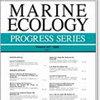Parasites of small pelagics reflect their role in marine ecosystems
IF 2.1
3区 环境科学与生态学
Q2 ECOLOGY
引用次数: 0
Abstract
ABSTRACT: Small pelagics occupy an intermediate trophic level in marine ecosystems, serving as prey for a variety of predators and thus playing a very important role in these ecosystems. This review collates information gleaned from parasitological studies of small pelagics (fish, squid and euphausiids) and describes the valuable biological information they can provide. We describe why parasitology studies are important and how they have contributed to our understanding of the role of small pelagics in marine ecosystems. Pertinent general patterns in marine parasite ecology relevant to trophic interactions in small pelagics, including variations in parasite faunas with features such as host size, depth distribution and feeding behaviour are synthesized. With their relatively long life spans relative to stomach contents and stable isotopes, trophically transmitted parasites can provide a unique dietary history for the host. Therefore, we summarize the trophically transmitted parasites found most frequently in small pelagics and assess the potential of different parasite taxa as indicators of host diet. The use of multiple techniques, including stomach contents and stable isotopes, along with parasites, are evaluated to better reveal fish diets. Parasites provide complementary, and additional, information compared to other techniques. Furthermore, we discuss how the presence of certain parasites in small pelagics can be used to infer their main predators and emphasize the neglected but important role of parasites in elucidating a host’s role in marine food webs. Lastly, we identify important gaps in our knowledge of the parasites of small pelagics and what can be done to fill these gaps.小型中上层鱼类的寄生虫反映了它们在海洋生态系统中的作用
摘要:小型中上层鱼类在海洋生态系统中处于中间营养级,是各种捕食者的猎物,因此在这些生态系统中扮演着非常重要的角色。本综述整理了对小型中上层动物(鱼类、鱿鱼和裙带鱼)进行寄生虫学研究收集到的信息,并介绍了这些研究可提供的宝贵生物信息。我们阐述了寄生虫学研究的重要性,以及这些研究如何帮助我们了解小型中上层鱼类在海洋生态系统中的作用。综述了海洋寄生虫生态学中与小型中上层鱼类营养相互作用相关的中肯的一般模式,包括寄生虫群与宿主大小、深度分布和摄食行为等特征的变化。相对于胃内容物和稳定同位素而言,营养传播寄生虫的寿命相对较长,可为宿主提供独特的饮食历史。因此,我们总结了小型鹈鹕中最常见的营养传播寄生虫,并评估了不同寄生虫类群作为宿主饮食指标的潜力。我们评估了多种技术的使用情况,包括胃内容物和稳定同位素以及寄生虫,以便更好地揭示鱼类的饮食情况。与其他技术相比,寄生虫可提供补充信息和额外信息。此外,我们还讨论了如何利用小型中上层鱼类体内存在的某些寄生虫来推断它们的主要捕食者,并强调了寄生虫在阐明宿主在海洋食物网中的作用方面被忽视但却非常重要的作用。最后,我们指出了我们在小型鹈鹕寄生虫知识方面的重要差距,以及如何弥补这些差距。
本文章由计算机程序翻译,如有差异,请以英文原文为准。
求助全文
约1分钟内获得全文
求助全文
来源期刊

Marine Ecology Progress Series
环境科学-海洋学
CiteScore
5.30
自引率
8.00%
发文量
238
审稿时长
3 months
期刊介绍:
The leading journal in its field, MEPS covers all aspects of marine ecology, fundamental and applied. Topics covered include microbiology, botany, zoology, ecosystem research, biological oceanography, ecological aspects of fisheries and aquaculture, pollution, environmental protection, conservation, and resource management.
 求助内容:
求助内容: 应助结果提醒方式:
应助结果提醒方式:


